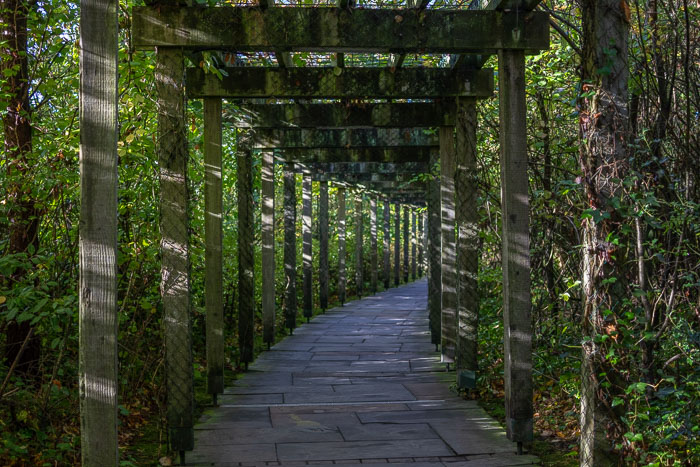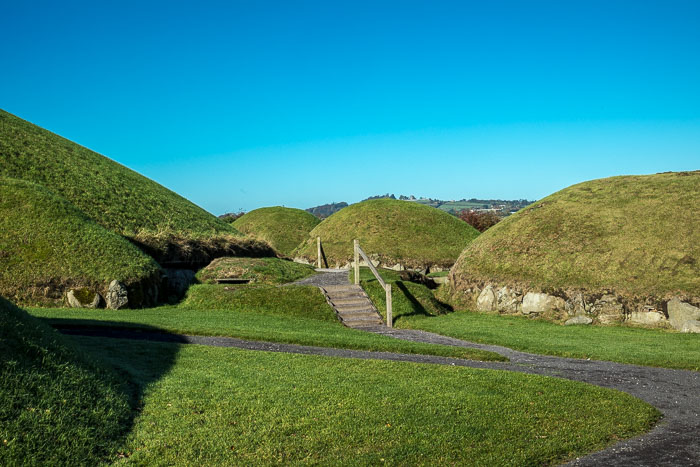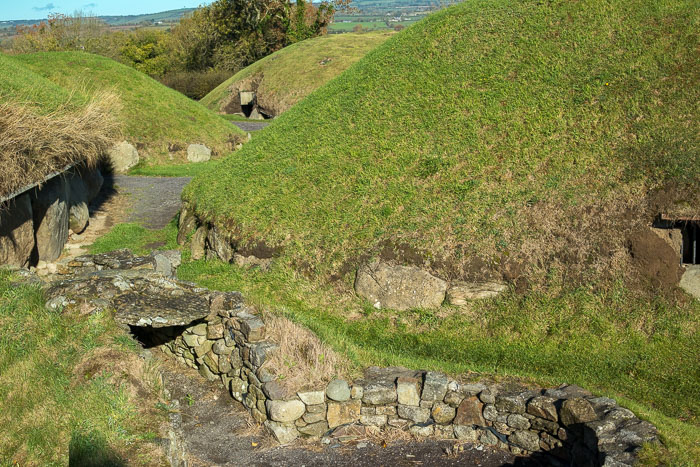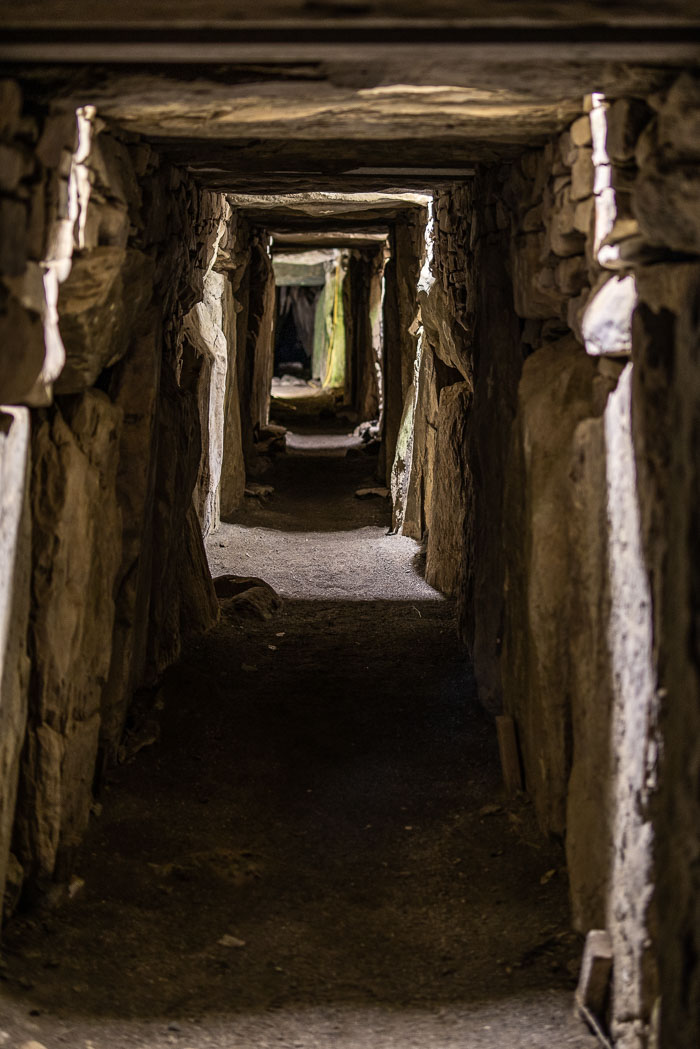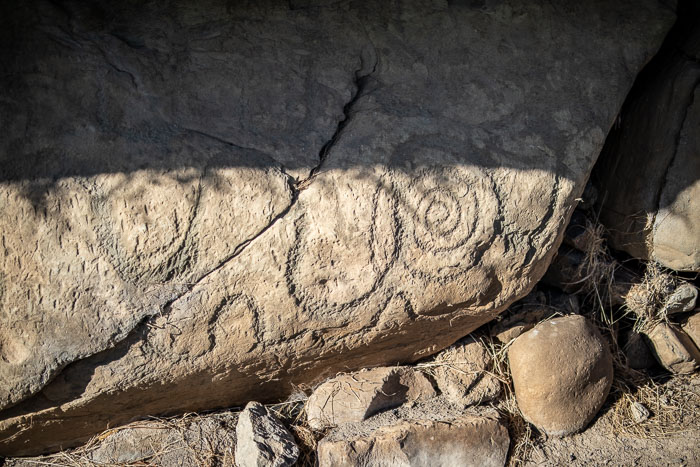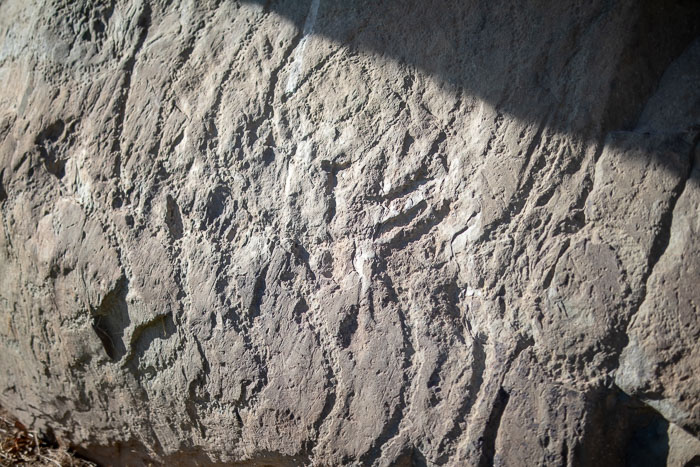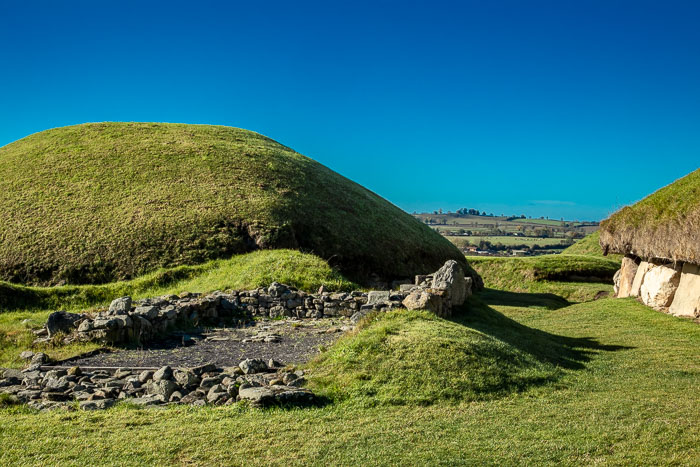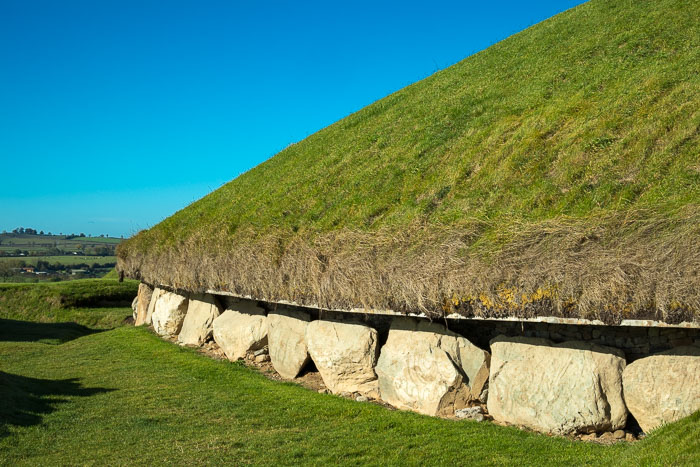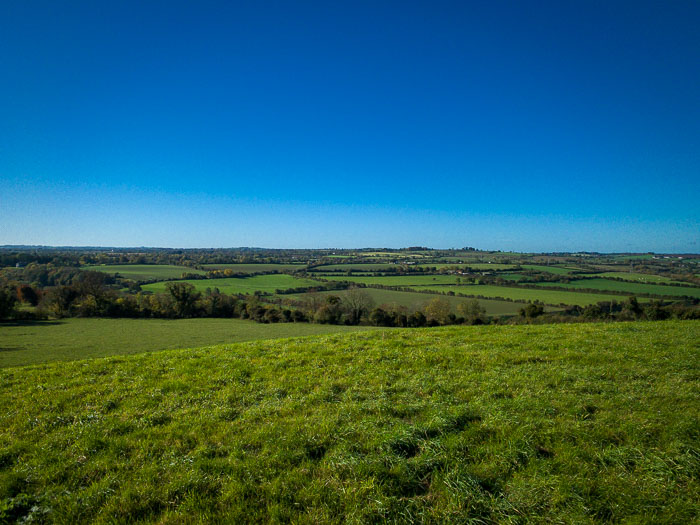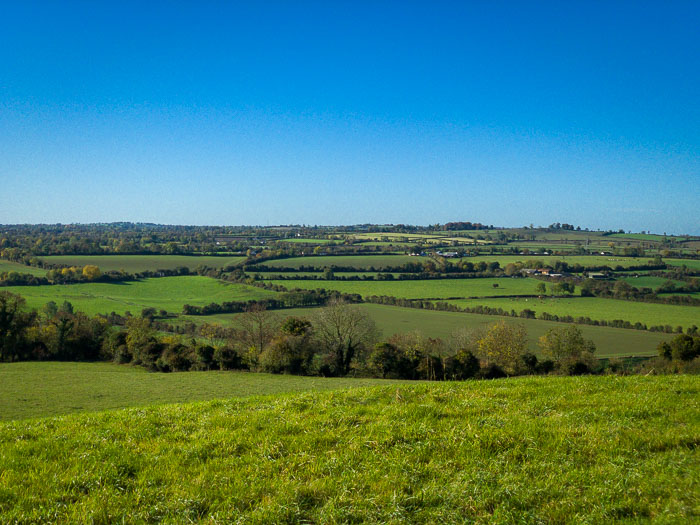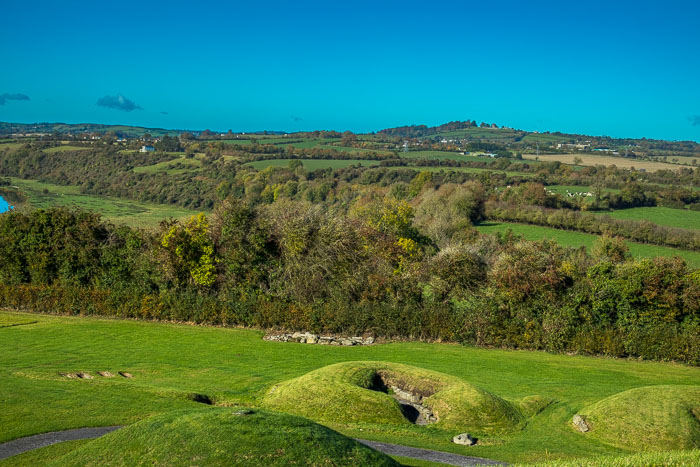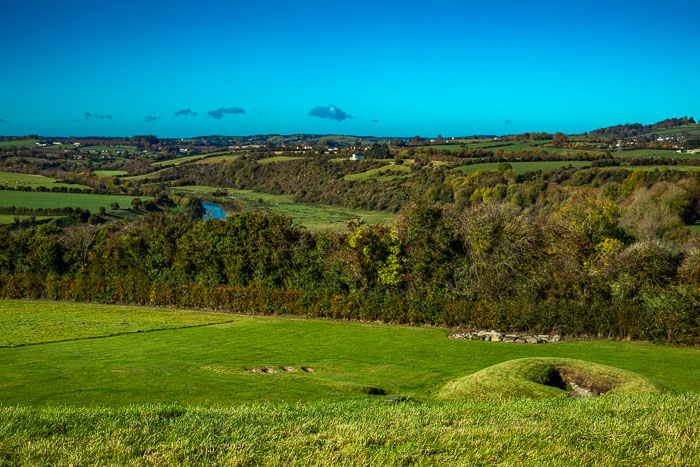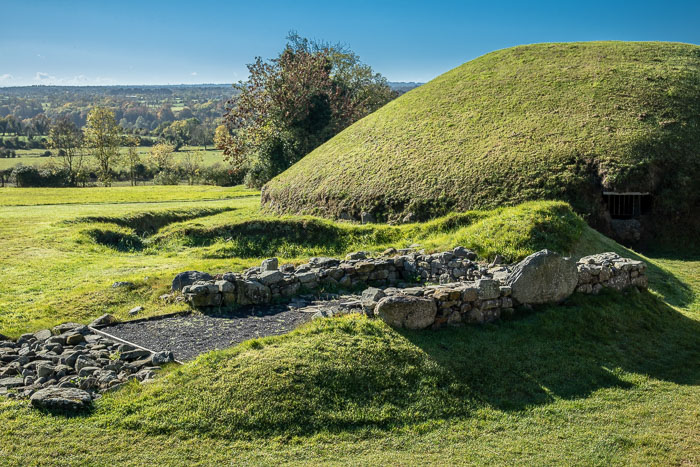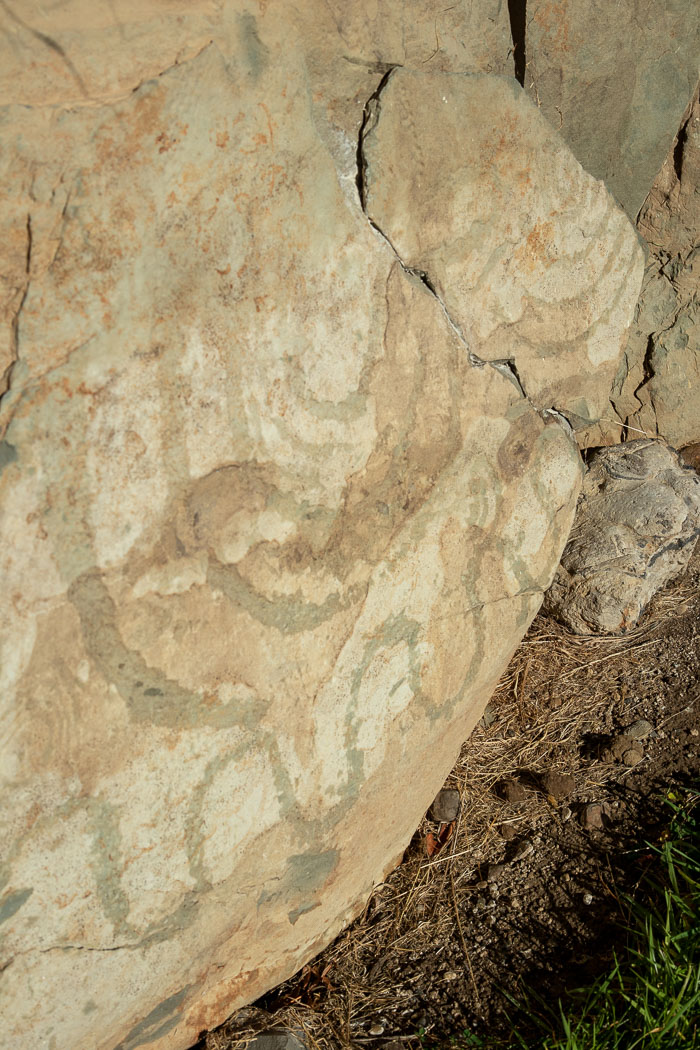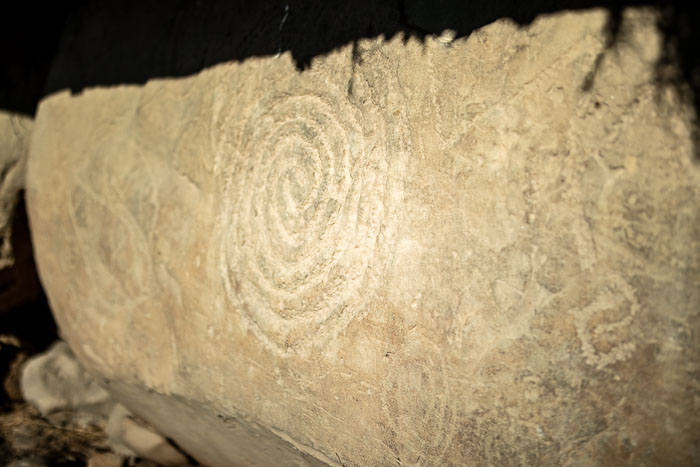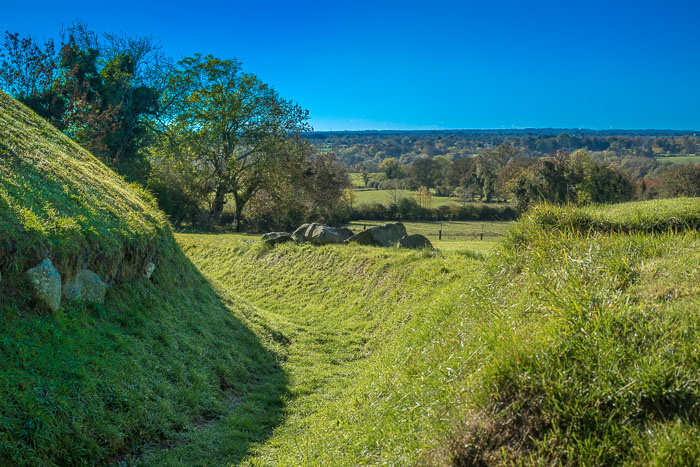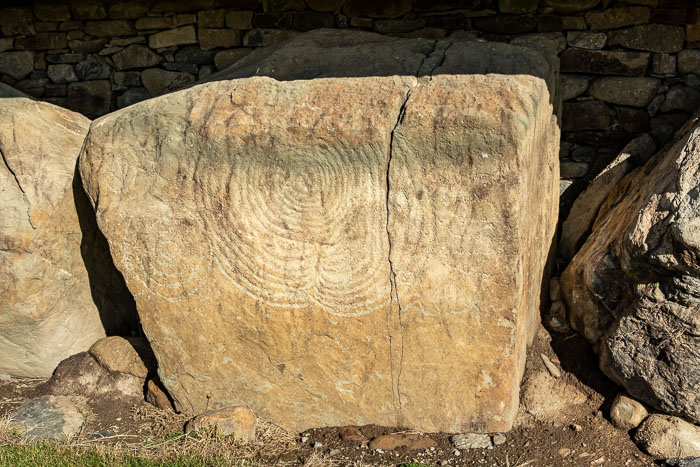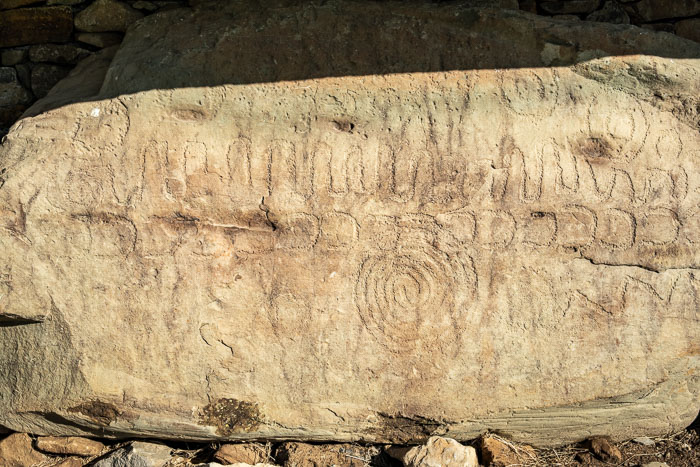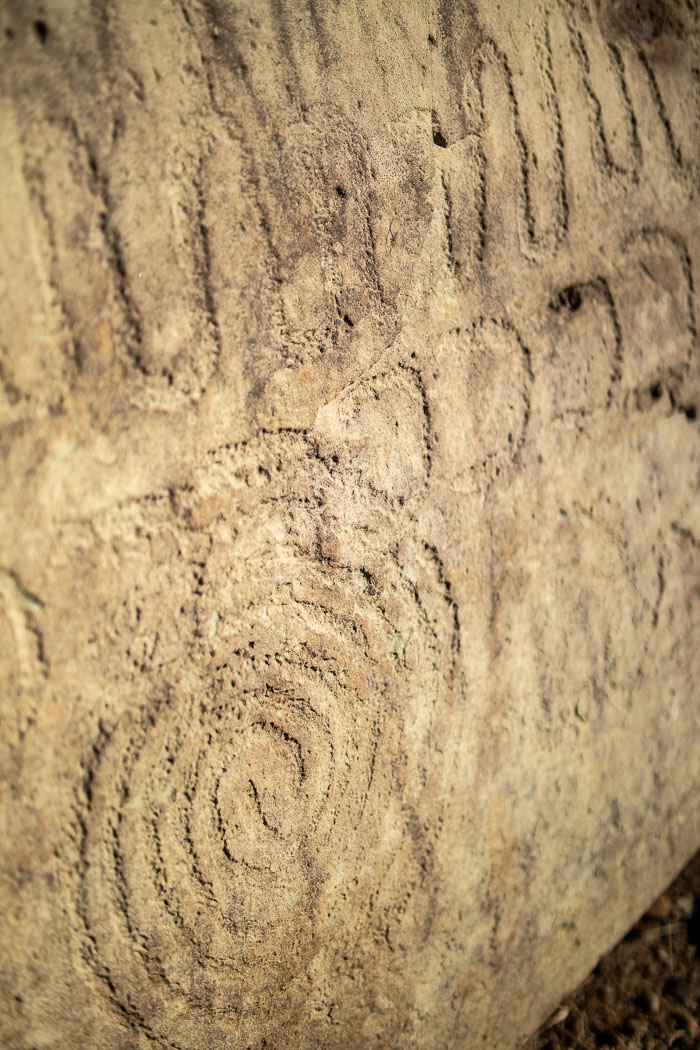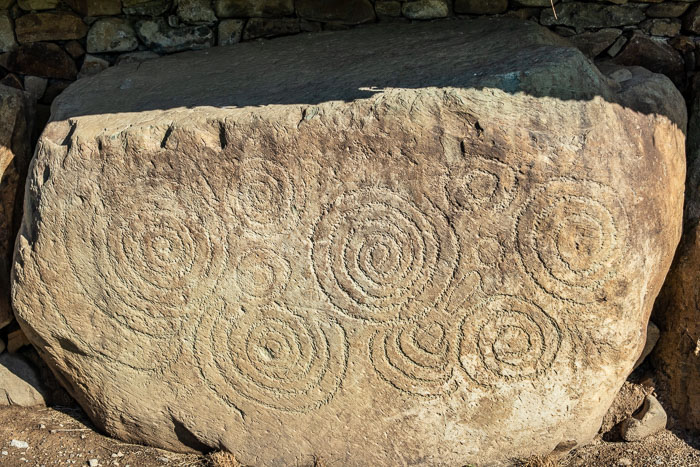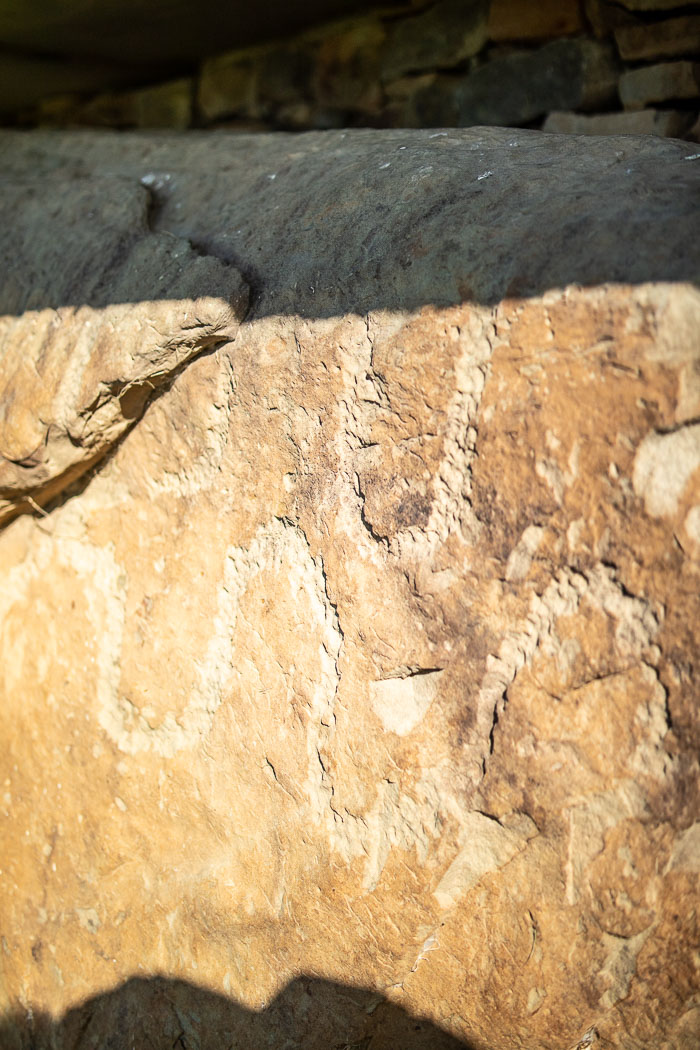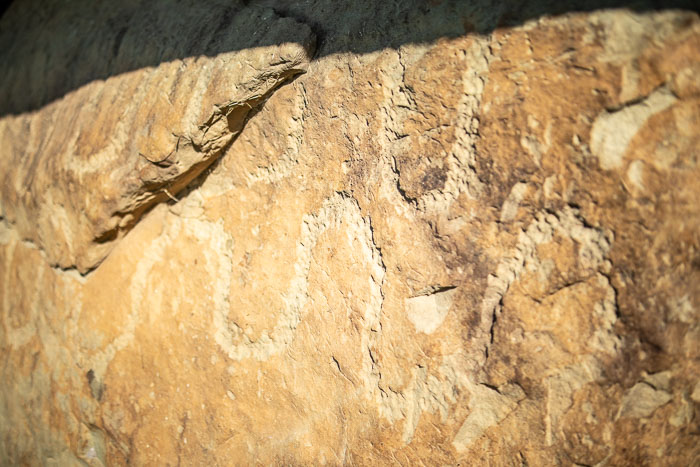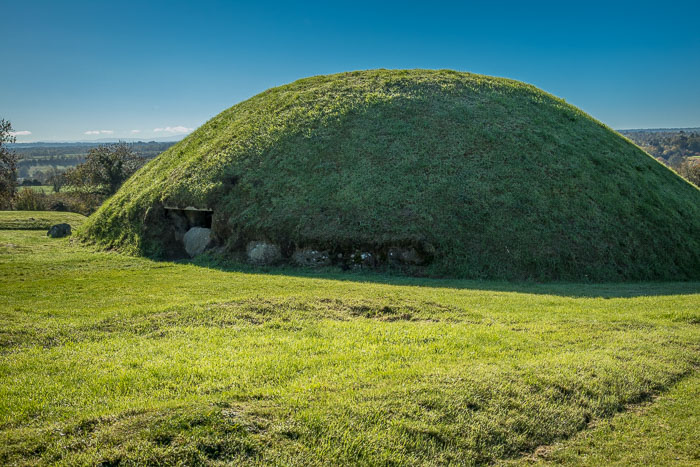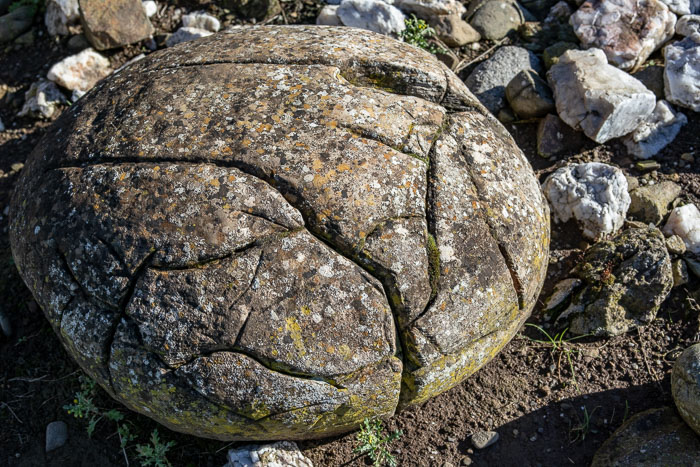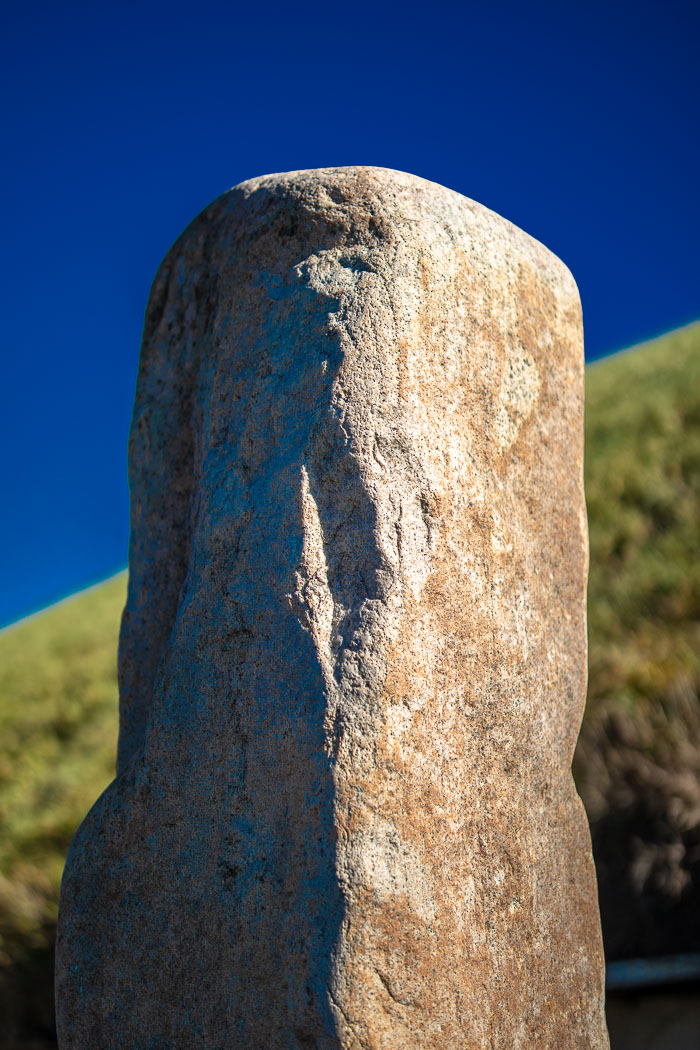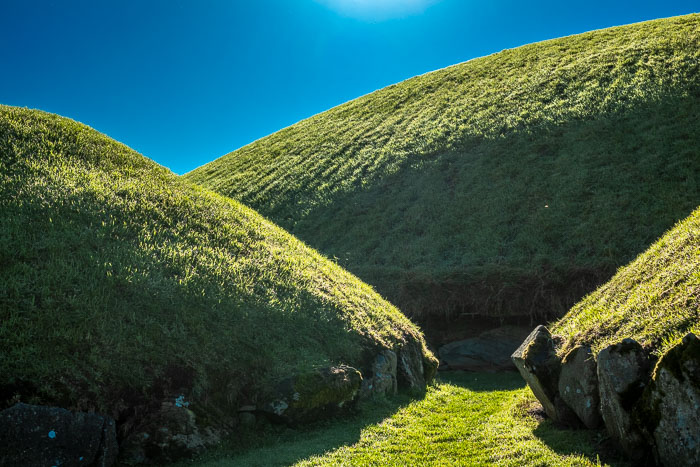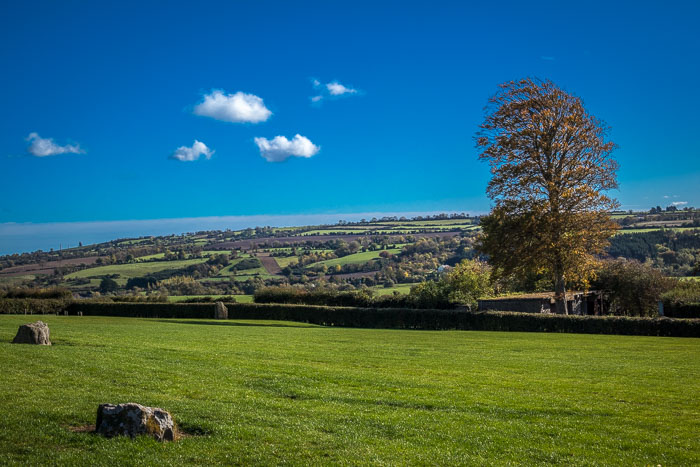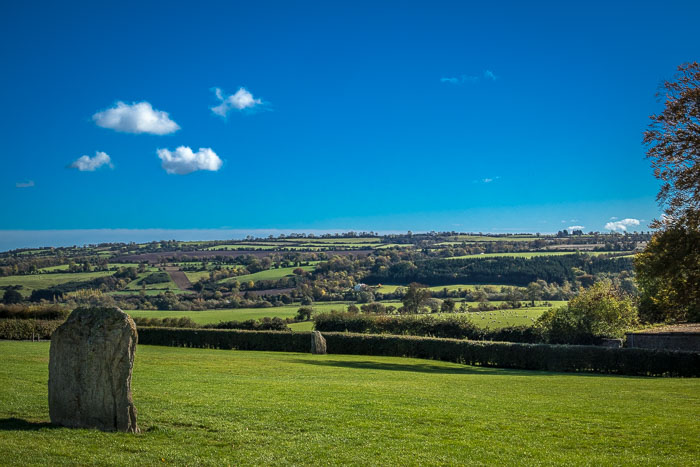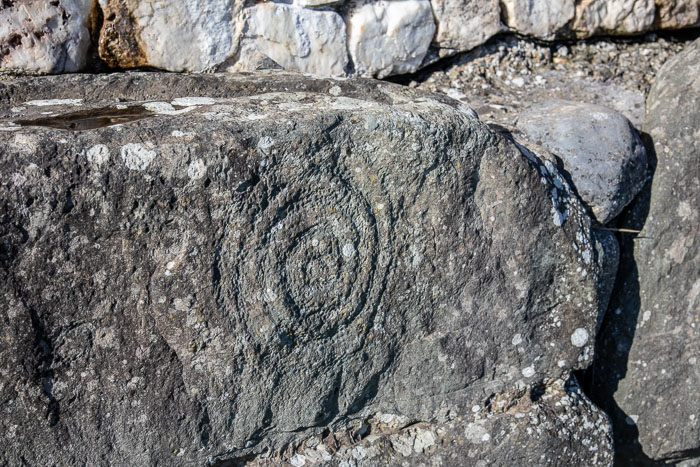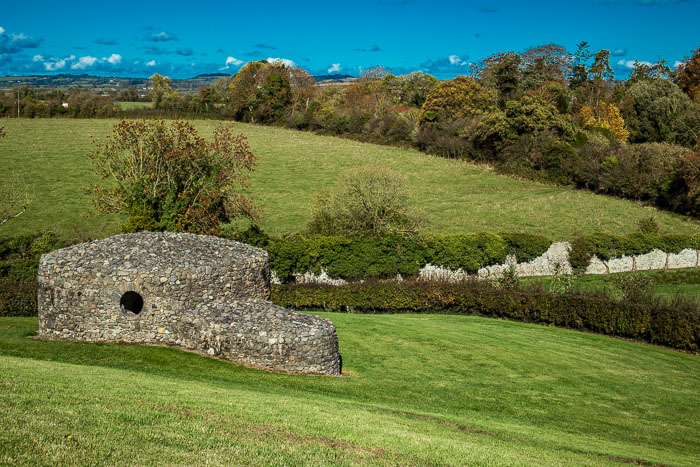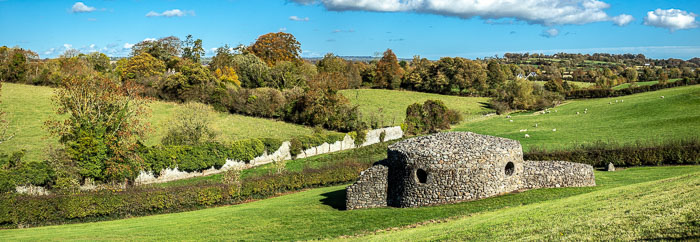Brú na Bóinne
Brú na Bóinne (Irish for Palace or Mansion of the Boyne) is a UNESCO World Heritage Site designated as Archaeological Ensemble of the Bend of the Boyne". The site is a complex of Neolithic mounds, chamber tombs, standing stones, henges and other prehistoric enclosures, some from as early as 35th century BC - 32nd century BC. The site thus predates Stonehenge the Egyptian pyramids and was built with sophistication and a knowledge of science and astronomy, which is most evident in the passage grave of Newgrange. The complex includes;
Knowth (Irish: Cnóbha) is a Neolithic passage grave. It is the largest passage grave of the Brú na Bóinne complex. It consists of a large mound and 17 smaller satellite tombs. The mound is about 12 metres high and 67 metres in diameter. It contains two passages placed along an east-west line and is encircled by 127 kerbstones.
Newgrange (Irish: Sí an Bhrú or Brú na Bóinne), consists of a large circular mound with an inner stone passageway and chambers. The mound has a retaining wall at the front, made mostly of white quartz cobblestones, and it is ringed by engraved kerbstones. Many of the larger stones of Newgrange are covered in megalithic art. The mound is also ringed by a stone circle. Some of the material that makes up the monument came from as far away as the Mournes and Wicklow Mountains. Its entrance is aligned with the rising sun on the winter solstice, when sunlight shines through a 'roofbox' and floods the inner chamber with light.
also in this set of photos is;
The Hill of Tara (Irish: Cnoc na Teamhrach or Teamhair na Rí), was, ooccording to legend, the seat of the high-kings of Ireland from the times of the mythological Fir Bolg and Tuatha Dé Danann. The hill complex includes the remains of several "hill forts", as well as;
The Mound of Hostages, has a short passage tomb aligned with sunrise on the solar cross-quarter days coinciding with ancient annual festivals celebrated on the midpoints between vernal and autumnal equinox.
The Lia Fáil (Irish: liə fal), meaning Stone of Destiny - or also "Speaking Stone" to account for its oracular legend - is a stone at the Inauguration Mound on the Hill of Tara in County Meath, Ireland, which served as the coronation stone for the High Kings of Ireland. The Lia Fáil was thought to be magical: when the rightful High King of Ireland put his feet on it, the stone was said to roar in joy.
The site also includes a 12th century (and up) graveyard and 19th century church built on the site of the 12th century one.
